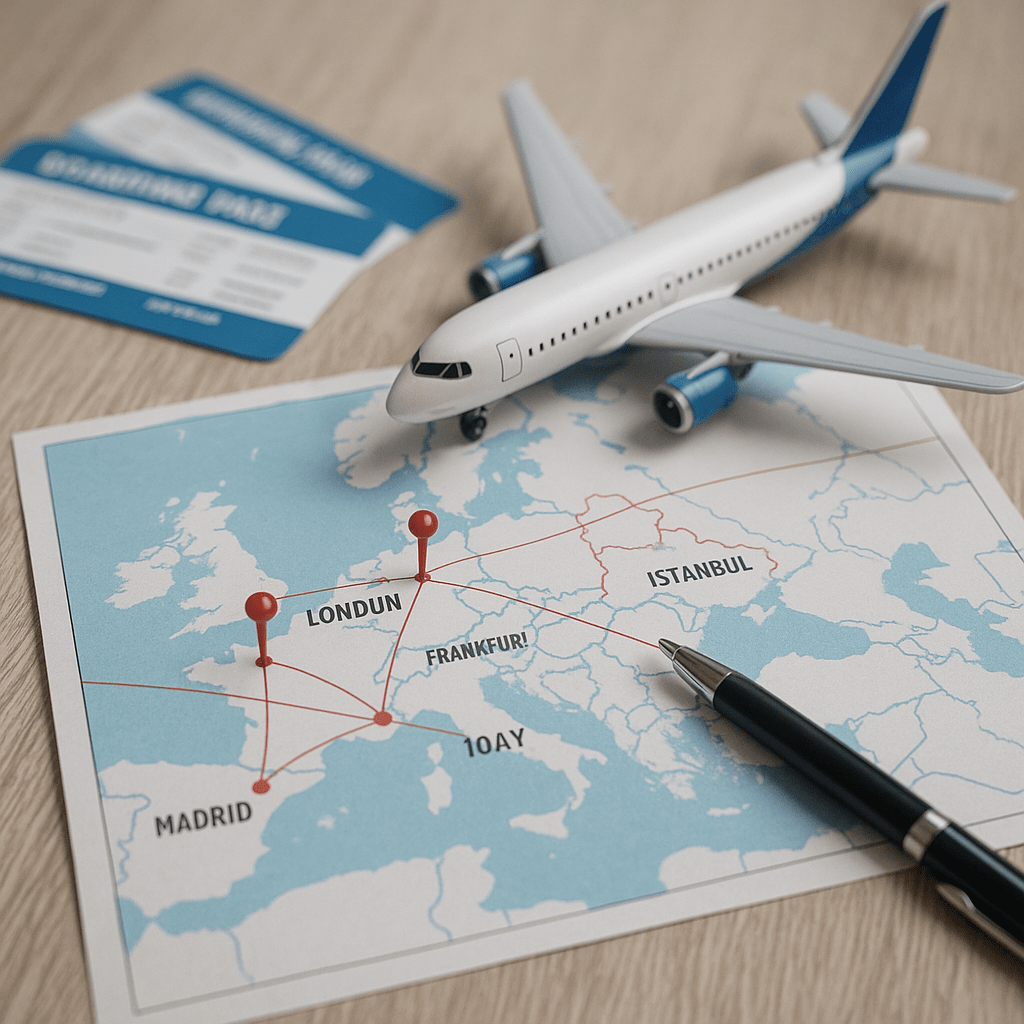
(Save Big By Thinking Like a Flight Hacker)
Sometimes the cheapest flight isn’t a flight.
Sometimes you need to combine airlines manually.
It’s two flights.
And no, you don’t need a fancy app to find them. You can do it yourself, if you know how to combine airlines the smart way.
This guide shows you how to manually piece together ultra-cheap routes, even across continents. It’s how real travel hackers fly long-haul for $200 or less.
Why Airline Search Tools Miss the Best Combos
Most flight search engines like Google Flights or Skyscanner focus on partnered airlines.
So if Delta and Air France are in the same alliance, you’ll see combos from them.
But if you want to fly one leg with a budget carrier, or mix airlines from different systems, they won’t show you those.
Example:
You might want to fly Berlin to Bangkok.
Google Flights shows you a $780 ticket with Qatar.
But a hacker sees:
- Berlin to Dubai with Wizz Air for $120
- Dubai to Bangkok with Scoot for $170
Total: $290
That’s the game.
What “Manual Flight Building” Means
It means you book two or more separate tickets with different airlines. They are not connected. You do the work of laying them out, matching the times, and managing the transfers.
No guarantees. But huge savings.
This method is also called:
- Self-connecting flights
- Unlinked segments
- Split ticketing
- DIY route building
Step-by-Step: How to Build Your Own Cheap Route
Step 1: Break Your Route into Segments
Say you want to fly from Paris to Bali. Don’t search that directly. Instead:
- Look for cheap international hubs in between.
- Check major low-cost airline bases (like Istanbul, Doha, Kuala Lumpur, Dubai, Bangkok).
- Use a world map if needed. Think geographically and practically.
Paris to Bali might break down like this:
- Paris to Istanbul (budget Europe carrier)
- Istanbul to Kuala Lumpur (AirAsia X or Turkish)
- Kuala Lumpur to Bali (Scoot or Batik Air)
Boom, you just created a $300 route instead of $850.
Step 2: Use the Right Tools (But Not All Together)
Use different platforms for different legs:
- Kiwi.com – Great for ideas. Not always for booking.
- Google Flights – Use the map feature for nearby cheap airports.
- Skyscanner – Often shows more low-cost airlines.
- FlyGPT – Simulates location-based prices and alternate route ideas.
- Airline websites – Always compare directly before booking.
Don’t rely on just one. Mix them.
Try Fly GPT Free
Step 3: Check the Timing Yourself
This is the important part.
If you land at 1 p.m. and your next flight is at 3 p.m., that’s tight. You need to:
- Allow for delays
- Re-check baggage policies (you’ll usually need to collect and re-check bags)
- Be able to go through customs and security again
Minimum layover for self-connections:
- 3 hours (same terminal)
- 5+ hours (different terminals or visa-required countries)
Sometimes it’s safer to plan an overnight stay.
Bonus Hack: Use Land Borders
Don’t forget about land. Seriously.
Flying to Geneva might be expensive. But flying to Milan and taking a $20 train works.
Same with flying to Amman instead of Tel Aviv. Or Singapore instead of Johor Bahru.
Land segments are your secret weapon.
Risk Warning (But It’s Manageable)
When you manually build routes, you take the risk. If one flight is late, the second airline won’t wait. You’re on your own.
Here’s how to reduce risk:
- Always leave a long layover
- Book the longer/more expensive leg second
- Avoid same-day connections if crossing borders
- Use one card for both bookings (easier refunds or disputes)
- Consider travel insurance if you’re nervous
And always double-check airport codes. Kuala Lumpur (KUL) is not the same as Subang (SZB).
Real Example: Amsterdam to Manila for $320
One of my best manual builds was this:
- Amsterdam to Istanbul with Pegasus: $89
- Overnight in Istanbul
- Istanbul to Dubai with FlyDubai: $92
- Dubai to Manila with Cebu Pacific: $139
Total: $320
The cheapest “normal” ticket for those dates? $740.
That’s how you win.
When This Works Best
Manual route building works great for:
- Long-haul international trips
- Countries with strong low-cost carriers (Asia, Europe, Middle East)
- Flexible travelers
- Digital nomads and backpackers
- Anyone with time and patience
Not ideal if you’re in a rush or need full-service luxury.
Tips to Level It Up
- Check flight connections manually on Google
- Join airline newsletters, budget carriers announce promo fares often
- Use VPNs to simulate local searches (prices may vary by country)
- Track promo days (Tuesdays, holidays, or anniversaries)
- Look for fifth freedom routes, flights between two countries by an airline from a third country (they’re often cheaper)
Final Thoughts
Flight search engines are powerful, but they’re not perfect.
If you really want the cheapest fares, build your own path. Combine airlines. Cross borders. Be creative.
Yes, it takes more time.
Yes, you take on a bit more risk.
But the payoff?
Flights for half the price. Sometimes less.
Smart travelers don’t just accept the route they’re given.
They make their own.
